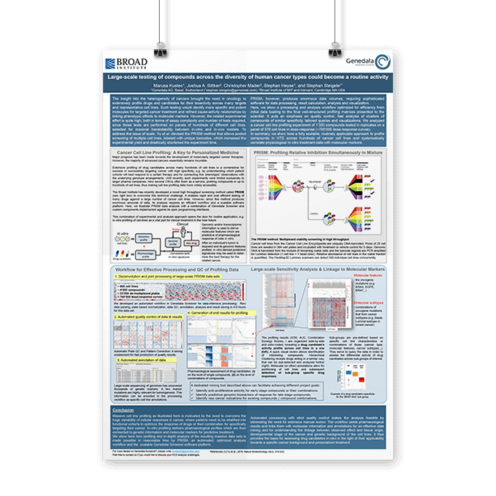ポスター:ヒトの多様ながん種を対象とした化合物の大規模試験
SLAS, San Diego, CA, USA
February 7, 2018
The insight into the heterogeneity of cancers brought the need in oncology to extensively profile drugs and candidates for their bioactivity across many targets and representative cell lines. Such testing would identify more specific and potent molecules for targeted cancer treatment and refined cause-activity relationships by linking phenotypic effects to molecular markers. However, the related experimental effort is quite high, both in terms of assay complexity and number of tests required, since these tests are performed on panels of hundreds of different cell lines, selected for maximal translatability between in-vitro and in-vivo models. To address the issue of scale, Yu et al. devised the PRISM method that allows pooled screening of multiple cell lines, labeled with unique barcodes, which increased the experimental yield and drastically shortened the experiment time. PRISM, however, produces enormous data volumes, requiring sophisticated software for data processing, result calculation, analysis and visualization. Here, we show a processing and analysis workflow optimized for efficiency from initial data loading to the final well-structured profiling matrices presented to the scientist. It puts an emphasis on quality control, fast analysis of clusters of compounds of similar specificity, tailored queries and visualizations. We analyzed a cancer cell line profiling experiment of 1’300 compounds tested in replicates on a panel of 578 cell lines in dose-response (~700’000 dose-response curves). In summary, we show here a fully scalable, routinely applicable approach to profile compounds in HTS across hundreds of cancer cell lines and systematically correlate physiological in-vitro treatment data with molecular markers.
